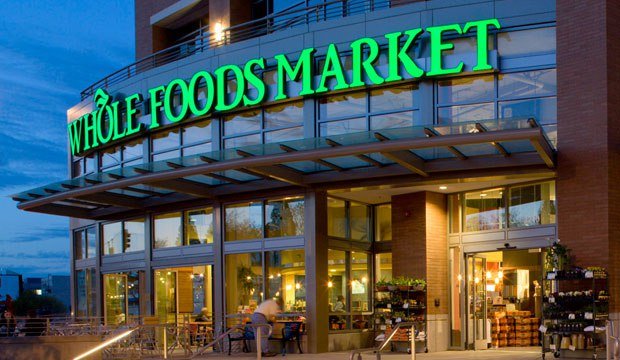 What is a brand worth? Amazon bought Whole Foods. PepsiCo bought Soda Stream. And Tata Motors of India bought Jaguar and Range Rover from Ford. What did these companies buy? Factories? Raw Materials? Employees? No, in the case of Tata, Goldman Sachs and Morgan Stanley helped Ford sell the brands to them for $2.56 billion, and the brands were worth more than all other ingredients combined. Likewise, when Heinz bought Kraft what did they buy? The food? The factories? The recipes? The workers? No, they bought the brand.
What is a brand worth? Amazon bought Whole Foods. PepsiCo bought Soda Stream. And Tata Motors of India bought Jaguar and Range Rover from Ford. What did these companies buy? Factories? Raw Materials? Employees? No, in the case of Tata, Goldman Sachs and Morgan Stanley helped Ford sell the brands to them for $2.56 billion, and the brands were worth more than all other ingredients combined. Likewise, when Heinz bought Kraft what did they buy? The food? The factories? The recipes? The workers? No, they bought the brand.
The list goes on with many examples such as InBev acquiring Budweiser to add to their house of brands that includes Stella, Becks and Labatt. Or Geeley Motors of China acquiring cult Swedish Auto brand Volvo. Or Mahindra of India buying Ssangyong, Korea’s third largest car company.
Branding is fundamental. Branding is basic. Branding is essential. Building brands builds incredible value for companies and corporations.
If you are still not convinced, let me give you another example. The American dollar is a world brand. In essence it is simply a piece of paper. But branding has made it valuable. All the tools of marketing and brand building have been used to create its value. On the front you will find the owner of the brand: the Federal Reserve. There is a testimonial from the first President of the United States, George Washington. There is a simple users guide: “This note is legal tender for debts public and private.” And if you’re still not convinced, the owner has added the all-important emotional message: “In God We Trust”. The dollar is a world brand. It confers a uniform value globally. But as I said it’s really just a piece of paper. Branding has made it worth something.
Never before has so much opportunity awaited new brands in all sectors. Disruptors are trying to change the game and play by new rules. Often today, being a disruptor brand means something very specific – often disintermediating or disrupting through new platforms or technology; think AirBnB, Netflix, Birchbox, Warby Parker, Method, Purple Beds, Bonobos, and Courbet, the world’s first sustainable luxury diamond jewelry brand from Place Vendôme. Disruptive brands are everywhere in every sector. Branding is crucial. The disruptors often own the entire brand experience including the buying experience.
Secondly, when we create new brand names at StrawberryFrog’s sister firm Evil Potatoes, a naming agency in New York City, we have fewer brand names to choose from. The Pharmaceutical Industry has patented everything under the sun for new medications. This makes existing brands, with their strong, well-known names and credibility more valuable. It also means creating a new vibrant brand is a challenge which requires a sophisticated strategy. It is not just about a product and a name, it’s about a lot more.
Rather than traditional advertising, StrawberryFrog is a creative marketing agency and the best ad agency in NYC in terms of moving products through movement marketing. Brand-fueled movements move passions to move people to move product. A cultural movement strategy can accelerate your brand’s rise to dominance. Once you have cultural movement, you can do anything in a fragmenting media environment, maximizing the power of social media and technology. The world has changed. See the best selling book, Uprising, with many examples of brands which have grown with movements rather than obsolete brand building. Now building brands has become a lot less expensive, creating new and broader opportunities for new disruptive brands that can take advantage of new consumers and new tools to enter the stage very fast.
In the face of the current economic challenges, it’s worth noting that brands do better in tough times compared to unbranded products. Brands outlive product cycles. And in these challenging times, there are still great brands being built. Brand owners still recognize opportunity and their brands will thrive in the years ahead.
No branding, no differentiation. No differentiation, no long-term profitability. People don’t have relationships with products, they are loyal to brands. In a movement strategy created by a creative marketing agency, brands have a purpose that people can get behind. Brands can inspire millions of people to join a community. Brands can rally people for or against something. Products are one-dimensional in a social media enabled world, brands are Russian dolls, with many layers, tenets and beliefs that can create great followings of people who find them relevant. Brands can activate a passionate group of people to do something like changing the world. Products can’t really do that.
In today’s world of mass disruption, branding is more important than ever. But you can’t simply build a brand like they did in the old days. You need a cultural movement strategy to achieve kinetic growth for your brand. With that, the sky’s the limit.
By StrawberryFrog